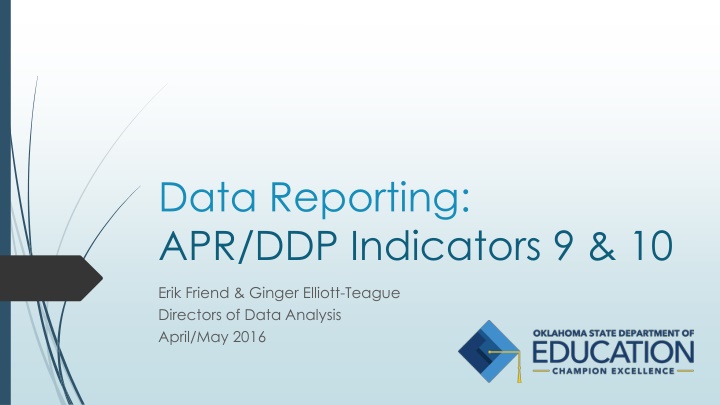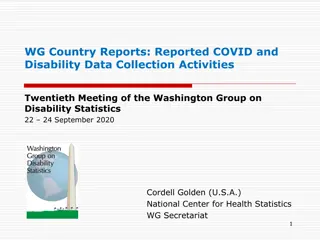Analysis of Disproportionate Identification in Special Education by Race and Disability
The data analysis report focuses on indicators 9 and 10, examining whether students of different racial groups are disproportionately identified as needing an IEP or a particular disability. The process involves isolating multi-race students and other racial groups to determine discrepancies in identification rates, followed by reviewing district policies to address any disparities. Contact information for further details is provided.
Download Presentation

Please find below an Image/Link to download the presentation.
The content on the website is provided AS IS for your information and personal use only. It may not be sold, licensed, or shared on other websites without obtaining consent from the author.If you encounter any issues during the download, it is possible that the publisher has removed the file from their server.
You are allowed to download the files provided on this website for personal or commercial use, subject to the condition that they are used lawfully. All files are the property of their respective owners.
The content on the website is provided AS IS for your information and personal use only. It may not be sold, licensed, or shared on other websites without obtaining consent from the author.
E N D
Presentation Transcript
Data Reporting: APR/DDP Indicators 9 & 10 Erik Friend & Ginger Elliott-Teague Directors of Data Analysis April/May 2016
Data Collection Notes Source: Oct. 1 Child Count through OK EdPlan Questions addressed: Ind. 9: Are students of one racial group more likely to be identified as needing an IEP than any other racial group? Ind. 10: Are students of one racial group more likely to be identified as having a particular disability than any other racial group?
Indicator 9: Disproportionate Identification by Race Step 1: # of Multi-Race IEP students/Total # Multi-Race students This gives us the percentage of Multi-Race students with IEPs. Step 2: # of All IEP except Multi-Race IEP students/Total # of all except Multi-Race students This gives us the percentage of all other students with IEPs. Step 3: % of Multi-Race IEP students/% of all others This tells us how much more/less likely it is for a Multi-Race student to be identified as needing an IEP than a child of another racial group. We take this approach for each racial group to determine whether it is more than 2.5 times more likely for a single group to be identified (as needing IEPs) in a particular district. After identifying disproportionality, we look at a district s policies and procedures on child find and identification to ensure that the policies are not contributing to the disproportionality.
Indicator 10: Disproportionate Identification by Disability This is calculated the same way as Indicator 9, except that each disability is isolated and separately calculated to ensure that there is not a disproportionate number of students of one race identified in one disability category. After identifying disproportionality, we again look at a district s policies and procedures on child find and identification to ensure that the policies are not contributing to the disproportionality.
OSDE Contact Need more detail? Contact: Erik Friend 405-521-2198 erik.friend@sde.ok.gov Ginger Elliott-Teague 405-521-4871 ginger.elliott-teague@sde.ok.gov























